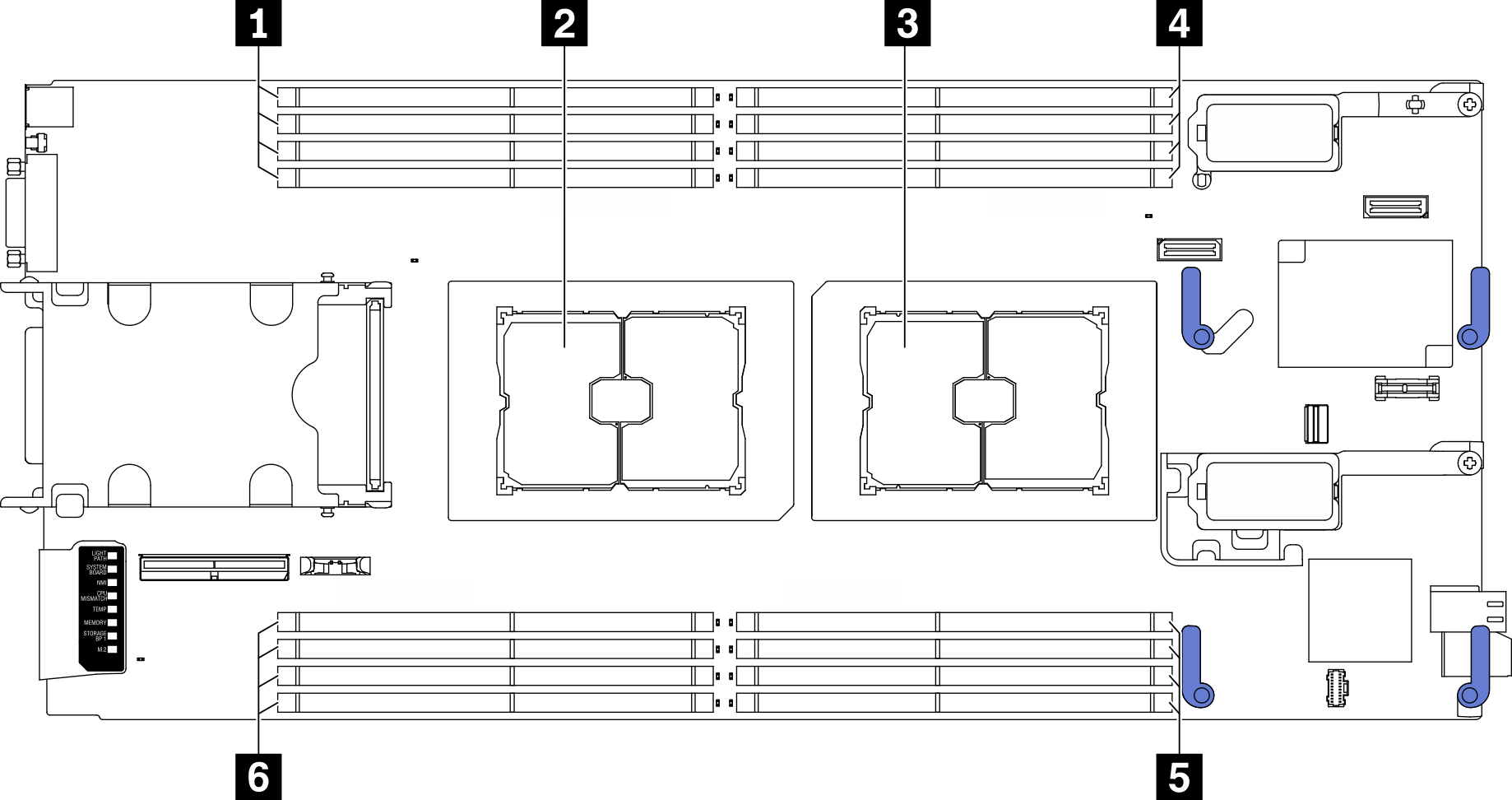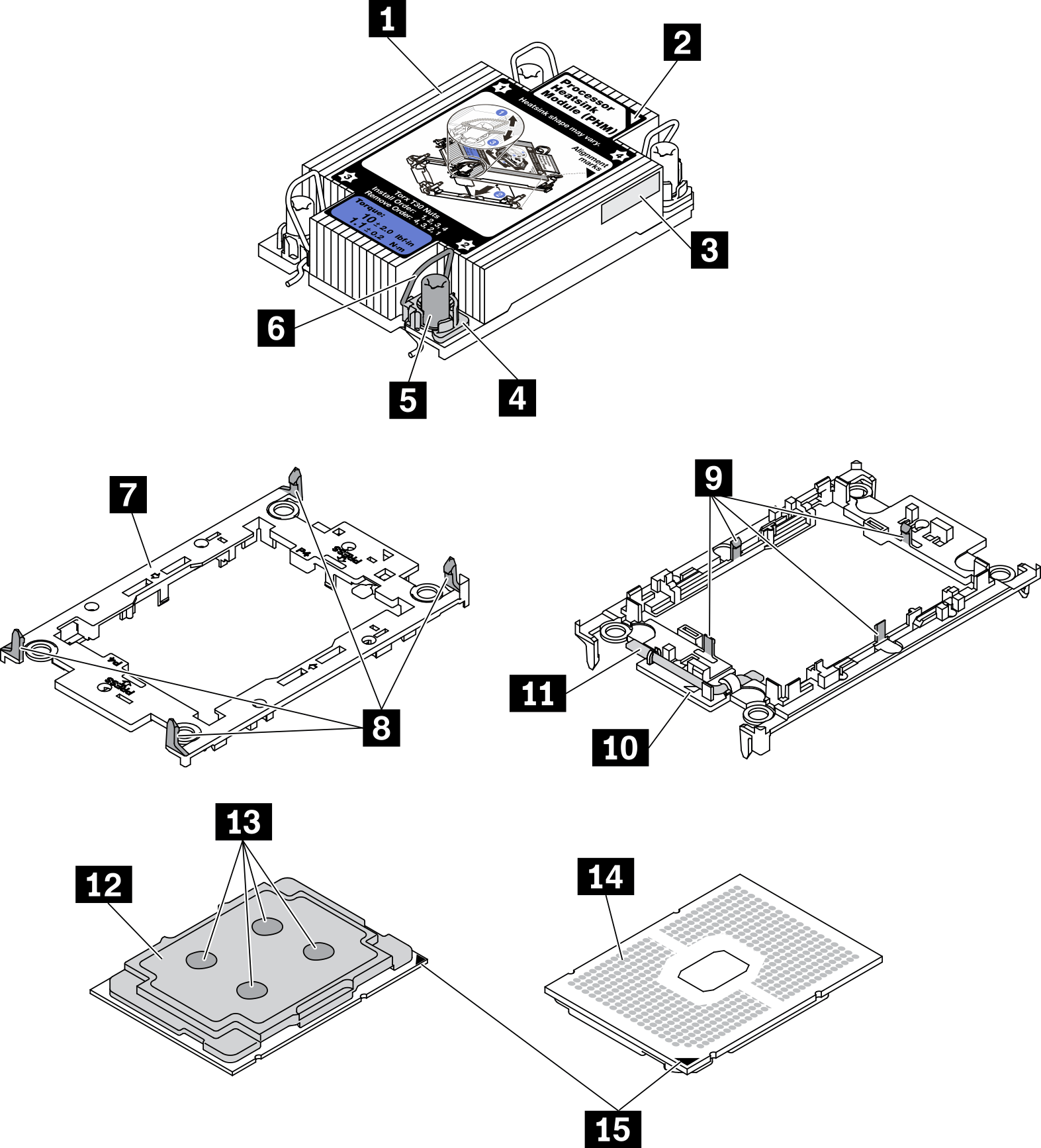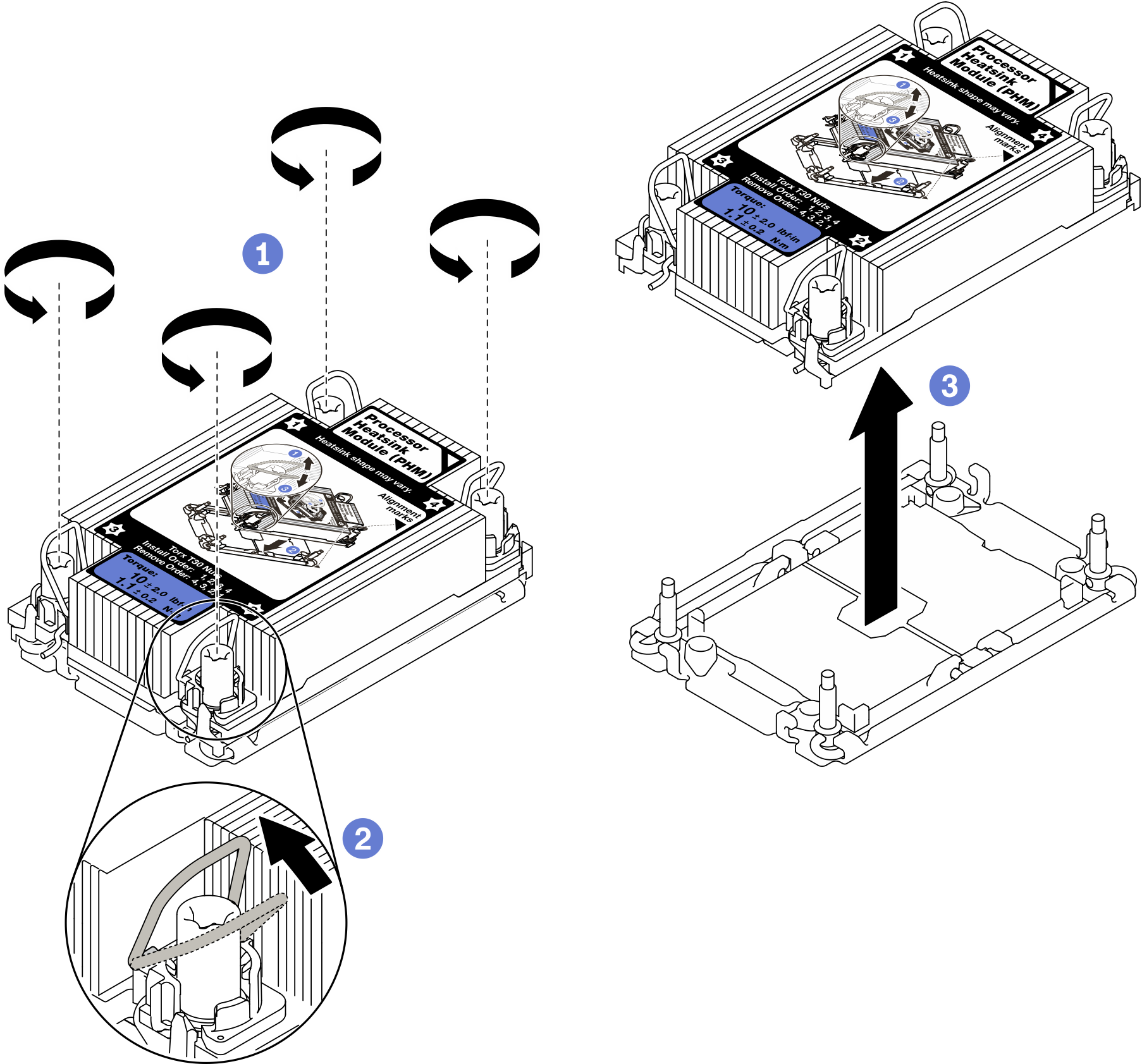Remove a processor and heat sink
This task has instructions for removing an assembled processor and heat sink, known as a processor-heat-sink module (PHM), a processor, and a heat sink. All of these tasks require a Torx T30 driver.
About this task
Read Safety inspection checklist and Installation Guidelines to ensure that you work safely.
Power off the corresponding compute node that you are going to perform the task on.
Remove the compute node from the chassis. See Remove the compute node from chassis.
Carefully lay the compute node on a flat, static-protective surface, orienting the compute node with the bezel pointing toward you.
Prevent exposure to static electricity, which might lead to system halt and loss of data, by keeping static-sensitive components in their static-protective packages until installation, and handling these devices with an electrostatic-discharge wrist strap or other grounding system.
Each processor socket must always contain a cover or a PHM. When removing or installing a PHM, protect empty processor sockets with a cover.
Do not touch the processor socket or processor contacts. Processor-socket contacts are very fragile and easily damaged. Contaminants on the processor contacts, such as oil from your skin, can cause connection failures.
Do not allow the thermal grease on the processor or heat sink to come in contact with anything. Contact with any surface can compromise the thermal grease, rendering it ineffective. Thermal grease can damage components, such as the electrical connectors in the processor socket.
Remove and install only one PHM at a time.
Install the PHM starting from processor socket 1.
The compute node supports one I/O expansion adapter when installed with one processor, and two I/O expansion adapters when installed with two processors. At least one I/O expansion adapter should be installed in the compute node.
EDSFF drive feature requires installing two processors in the compute node.

| 1 Memory module slots 9–12 | 4 Memory module slots 1–4 |
| 2 Processor socket 2 | 5 Memory module slots 5–8 |
| 3 Processor socket 1 | 6 Memory module slots 13–16 |

| 1 Heat sink | 9 Clips to secure processor in carrier |
| 2 Heat sink triangular mark | 10 Carrier triangular mark |
| 3 Processor identification label | 11 Processor ejector handle |
| 4 Nut and wire bail retainer | 12 Processor heat spreader |
| 5 Torx T30 nut | 13 Thermal grease |
| 6 Anti-tilt wire bail | 14 Processor contacts |
| 7 Processor carrier | 15 Processor triangular mark |
| 8 Clips to secure carrier to heat sink |
Procedure
- Make preparations for your compute node.
- Remove the compute node cover. See Remove the compute node cover.
- Remove the air baffle. See Remove the air baffle.
- Remove the PHM from the system board.
Empty processor socket must always contain a socket cover and a filler before the compute node is powered on.
If you are removing the PHM as part of a system board replacement, set the PHM aside.
If you are reusing the processor or heat sink, separate the processor from its carrier. See Separate the processor from carrier and heat sink
If you are instructed to return the defective component, package the part to prevent any shipping damage. Reuse the packaging the new part arrived in and follow all packaging instructions.
Demo video



